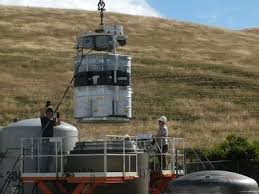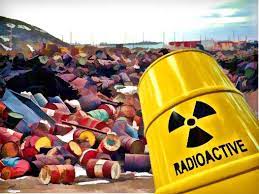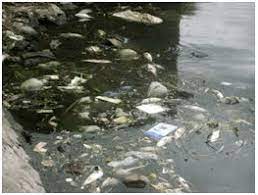Regulations and Laws Governing Hazardous and Toxic Substances
Management of hazardous wastes has been on the international environmental agenda from the early 1980s, when it was included as one of the three priority areas in the United Nations Environment Programme‟s (UNEP) first Montevideo Programme on Environmental Law in 1981.
Efforts are on globally and locally to control the incidence of unregulated and improper disposal of hazardous wastes. As a global response to the increasing incidence of dumping of hazardous wastes, mostly in developing countries, the Basel Convention on the Trans-boundary
Movement of Hazardous Wastes and their Disposal, was negotiated and adopted by 117 countries under the sponsorship of the United Nations, in March 1989 in the Swiss city of Basel.
Basel Convention on the Trans-boundary Movement of Hazardous Wastes and their Disposal
This Convention, which came into force in 1992, aimed at regulating the international trade in hazardous wastes.
That regulation was to be achieved by requiring exporters of hazardous wastes to obtain consent from receiving countries before shipping waste, and by requiring both the exporter and importer countries to ensure that the waste would be disposed of in an environmentally sound manner.
It further places restrictions on the import of hazardous wastes from non-party states to party states, except where compatible bilateral or multilateral agreements are in place between the party and non-party states providing for environmentally sound management of that waste.
In addition, the Basel convention provides that, where possible, hazardous wastes should be disposed of as close as possible to their sites of generation (i.e. an international expression of the proximity principle).
A still more restrictive convention was reached in March 1994 when,with the United States dissenting,most western industrialized countries agreed to ban the export of all poisonous or hazardous industrial wastes and residues to the developing world, the countries of Eastern Europe and the former Soviet Union . By 1996, 97 countries had imposed national bans on hazardous waste imports for whatever reasons.
The Basel Convention on the Control of Trans-boundary Movements of Hazardous Wastes and their Disposal was adopted on 22nd March, 1989 and entered into force on 5th May, 1992.
It was adopted in 1989 in response to a public outcry following the discovery, in the 1980s, in Africa and other parts of the developing world of deposits of toxic wastes imported from abroad.

The Convention aims to protect human health and the environment against the adverse effects resulting from the generation, management, trans-boundary movements and disposal of hazardous and other wastes.
Significant Developments in Basel Convention Governance
The Amendment to the Convention on the Control of Trans-boundary Movements of Hazardous Wastes and their Disposal (“the Basel Ban”) which was adopted by the third meeting of the Conference of the Parties (COP) in 1995.
The Basel Protocol on Liability and Compensation for Damage resulting from Trans- boundary Movements of Hazardous Wastes and their Disposal was adopted by COP 5 in 1999.
A Committee for Administering the Mechanism for Promoting Implementation and Compliance was established at COP 6 in Geneva in 2002.
There has been synergy between the Basel Convention, Rotterdam Convention on the Prior Informed Consent Procedure for Certain Hazardous Chemicals and Pesticides in International Trade and the Stockholm Convention on Persistent Organic Pollutants.
Specific Objectives of the Basel Convention
The reduction of hazardous waste generation and the promotion of environmentally sound management of hazardous wastes, wherever the place of disposal;
The restriction of trans-boundary movements of hazardous wastes, except where it is perceived to be in accordance with the principles of environmentally sound management; and
A regulatory system applying to cases where trans-boundary movements are permissible.
Scope of the Basel ConventionIts scope of application covers a wide range of wastes defined as “hazardous wastes” based on:
Their origin and/or composition and their characteristics (article 1 and annexes I, III, VIII and IX).
Obligations of Parties
Parties exercising their right to prohibit the import of hazardous wastes or other wastes for disposal shall inform the other Parties of their decision (art.4 (1a)).
Read Also : Analysis of Some Hazardous and Toxic Substances
Parties shall prohibit or shall not permit the export of hazardous wastes and other wastes if the State of import does not consent in writing to the specific import, in the case where that State of import has not prohibited the import of such wastes (art.4 (1c)
Exemptions to General Obligations
Trans-boundary movement of hazardous wastes and other wastes is only allowed if:
The State of export does not have the technical capacity and the necessary facilities, capacity or suitable disposal sites in order to dispose of the wastes in question in an environmentally sound and efficient manner;
The wastes in question are required as a raw material for recycling or recovery industries in the State of import; and 47 categories of waste to be controlled under Basel exclude radioactive wastes.
Bamako Convention on the Ban of the Import into Africa and the Control of Trans- boundary Movement and Management of Hazardous Wastes within Africa
In 1988, the Organisation of African Unity (OAU) adopted a resolution proclaiming the dumping of nuclear and industrial wastes in Africa to be a crime against Africa and its people.
In 1991, the OAU adopted the Bamako Convention on the Ban of the Import into Africa and the Control of Trans-boundary Movement and Management of Hazardous Wastes within Africa (OAU, 1991).
Under this treaty, parties are to prohibit the import of all hazardous wastes for any reason into Africa by non-parties and to prohibit the dumping at sea of such wastes.
The 1991 Bamako Convention includes radioactive properties in addition to the under listed properties:
- Explosive
- Flammable liquids
- Flammable solids
- Oxidising
- Organic peroxides
- Poisonous (acute)
- Corrosives
- Toxic (delayed or chronic)
- Ecotoxic.



